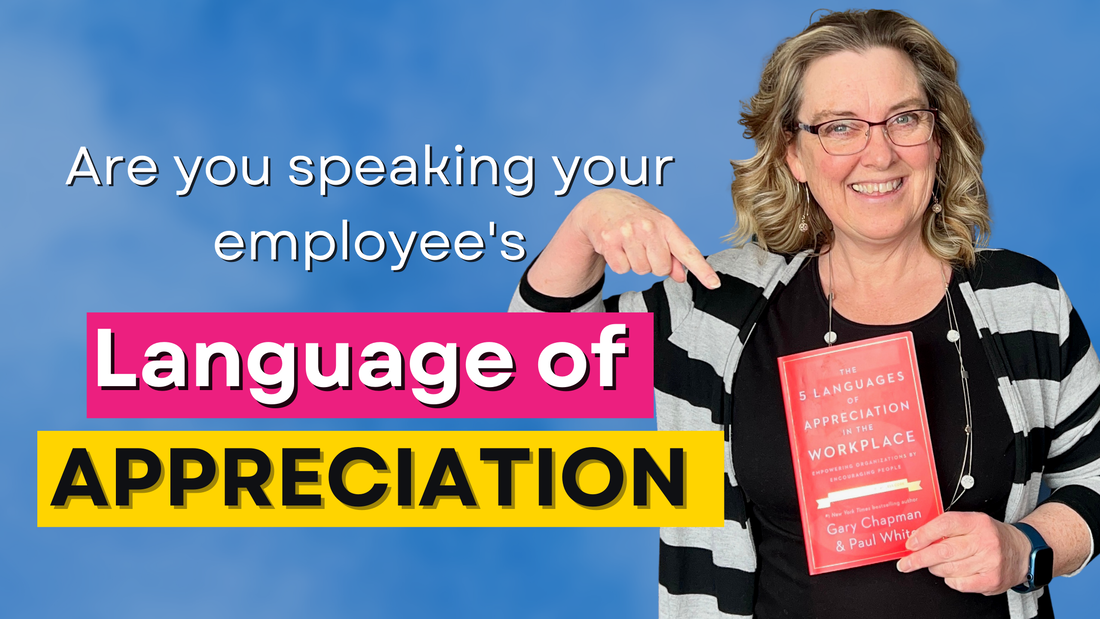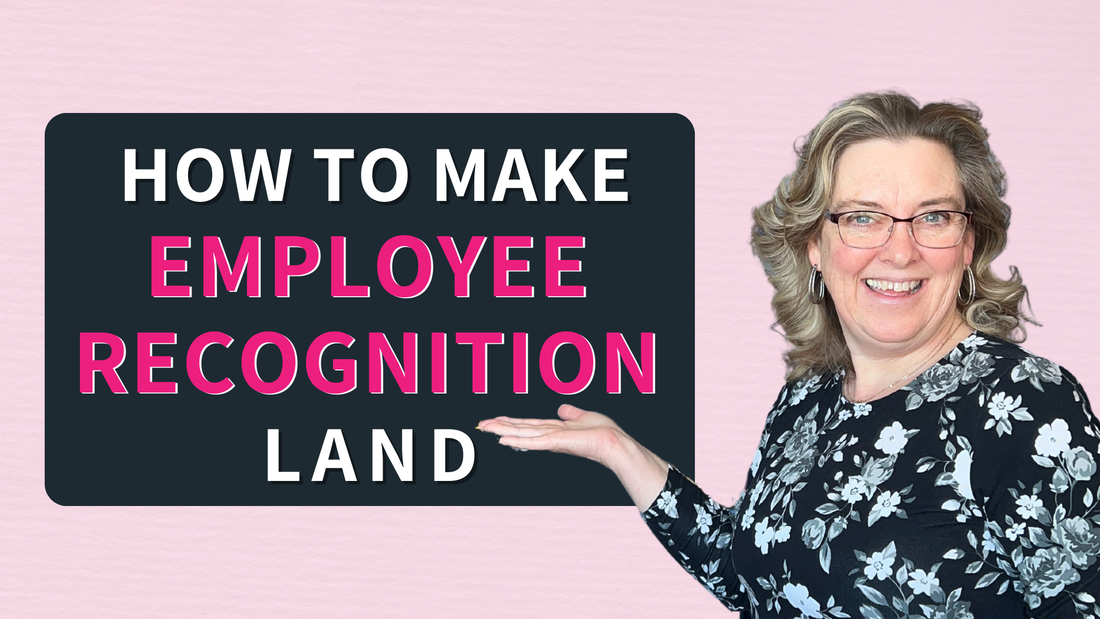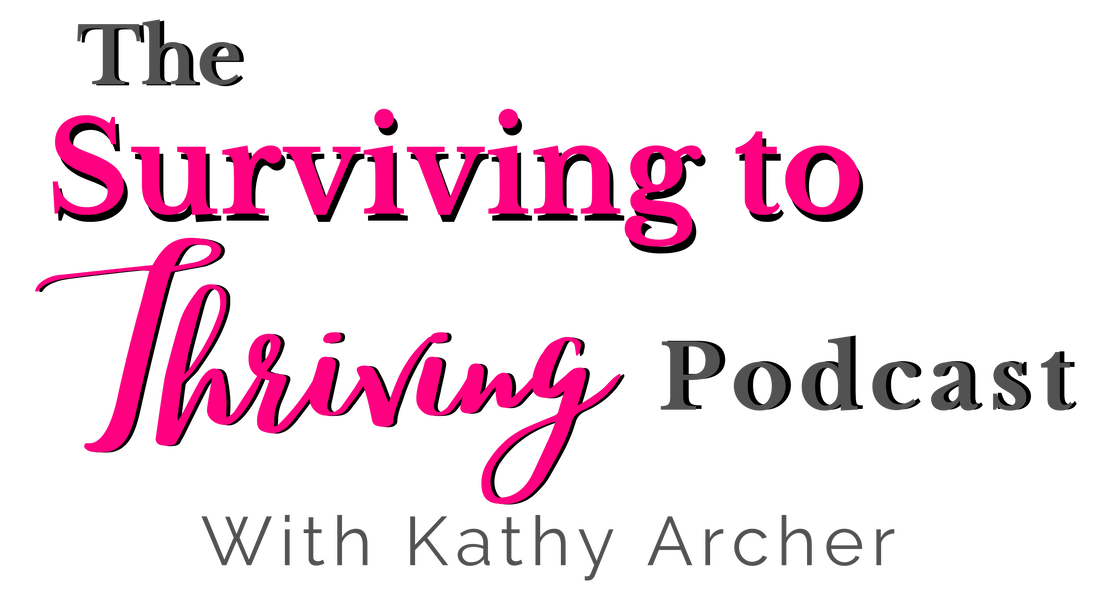|
Do you ever try to give appreciation to your employees and feel sometimes it falls flat? Have you ever wondered why you bother, what you are doing wrong or if it is even working?
You aren't alone! Many leaders attempt to give appreciation but miss the mark leaving both them and the employee wondering, "What the heck was that?" You: Thanks for helping me out with that project. Them: Sure 🤨 You in your head: That's it! Just sure. It doesn't even seem like you heard what I said! You: Take the afternoon off. You deserve it! Them: Nah, I've got lots to do. I'd rather get it done. 🤨 You in your head: Um...Does a whole afternoon off not sound good to you? You: I wanted to acknowledge the work you've all put in over the last few months. Here's a mug and t-shirt! Them: Later, you hear two staff mumbling in the coffee room; A stupid mug and a t-shirt I'll never wear! 🤨 You in your head: Really! How ungrateful! Why bother with recognition? It's no wonder many leaders throw their hands up and wonder why bother. Yet we know that when employee recognition hits the mark, employees are:
Given we are struggling to get and keep good employees who don't burn out, the stats are worth looking at! And it would behoove us to consider what we need to do to get employee recognition to stick! No, but we do need to speak their appreciation language Gary Chapman and Paul White wrote The 5 Languages Of Appreciation In The Workplace: Empowering Organizations by Encouraging People. This was a follow-up to Chapman's best-selling book The 5 Love Languages. In The 5 Languages Of Appreciation In The Workplace, leaders and coworkers learn to understand each other by speaking each other's appreciation language. When you learn t do this, you' will also learn to make appreciation stick! The 5 languages of appreciation in the workplace Here's a summary of the 5 languages of appreciation in the workplace:
And it needs to stick If you're offering recognition or appreciation in a way that doesn't land for an employee, you're not making them feel appreciated; instead, you might actually be turning them off. For example, if you acknowledge someone at a staff meeting for their work, and they don't like a public announcement, they may be annoyed, embarrassed, and hope you never do it again. On the other hand, that same person might've appreciated you coming into the office, sitting for five minutes and spending quality time with them. Therefore, it would help to learn and use the languages of appreciation. However, as I said in this post, 5 Keys to Meaningful Employee Recognition appreciation isn't just your job. There is no way you have the time, the resources, or the capacity to do this all by yourself. That's a heavy burden to take on and one that you will not have the time for. Also, when we encourage peer-to-peer recognition and appreciation, there is increased collaboration, and stronger peer-to-peer relationships are built. Your employees will communicate more effectively, get along better, and they're going to support each other, especially in those crisis moments. How to use the book The 5 Languages Of Appreciation in the workplace to create a culture of recognition So, how could you use the book The 5 Languages Of Appreciation In The Workplace to create a culture of recognition? Here are four suggestions: 1 - Identify everyone's language of appreciation Clear up miscommunication by communicating appreciation in languages you all understand. That starts with identifying everyone's language of appreciation. Give your team members access to the assessment that helps them identify their preferred language of appreciation. This could help them understand how they prefer to be appreciated and also help them recognize the preferences of their colleagues. Language of Appreciation Assessment You could purchase an assessment for each team member or buy a book for each, which has a code to complete the assessment so that everyone can identify their language of appreciation. 2 - Start a book club You could suggest the team read The 5 Languages of Appreciation in the Workplace as a group and discuss the concepts presented in the book. Then, you and your team could meet once every two weeks for a couple of months to discuss the book and share ideas on implementing the concepts presented in their work environment. 3 - Train your team You could read and study the book and use the book as a basis for a training session or workshop for your team. You'd want to cover the different languages of appreciation, how to identify them in team members, and how to use them to create a culture of recognition. 4 - Give them the tools to appreciate each other with the 5 languages You could encourage peer recognition by providing team members with the tools they need to identify the languages of appreciation in their colleagues.
These tools can help team members understand and use the various languages of appreciation in the workplace and create a culture of recognition and appreciation that can improve team morale and productivity. It's important to note that everyone has a preferred language of appreciation and that not all languages of appreciation will be equally effective for every person. The key is to identify each team member's preferred language of appreciation and use it regularly to create a culture of recognition and appreciation in the workplace.
0 Comments
From Guilty to Empowered: Overcoming the Guilt of Taking a Sick Day in Nonprofit Leadership28/2/2023 Last week, I came down with a nasty case of the Norovirus and yet...
How can I take time off? My first thought was: I've just got to get through this, and then I can get to work. My second thought was: I'll just pretend I'm OK. I won't let anyone know I'm sick. My third thought was: Did you just think that? Just pretend? Is that the kind of person I want to be when my body clearly tells me I should not be at my computer? I will pretend I'm OK and not let on that I'm about ready to fall over. Seriously? I can barely walk from room to room, and I can't stay awake for more than an hour, and I'm going to pretend I'm OK? That realization quickly urged me to clear my day's schedule and let myself be sick! Sometimes it's "easy" to decide that. However, at other times, taking time off because you are sick isn't always such a clear choice. 👉 As leaders, we can't always take a sick day when were are not feeling our best. Sometimes you must work with a headache. Sadly, you can't always stay home when your menstrual cramps are killing you. And if we all took time off when we had the sniffles, work would never get done. So how do you know when it's OK to take time off and when it's not? 1️⃣ First, you need to pause, stop and perhaps sit down. 2️⃣ Then with intention, ponder your dilemma. You won't make your best decision with unconscious thoughts whirling in your head. Let's go through some considerations, and I'll provide you with questions you can mull over to help you make a decision you'll feel better about. 🤔 What kind of workplace culture are you creating? The obvious question is, are you contagious? But we all know that even that won't stop many of us from working. Instead, we'll rationalize it to either I'm working at home, I'll keep my distance, or they've probably already been infected. But what if you took that question a step further?
Does that change your perspective a wee bit?
What's the impact of your taking time off? Leaders carry different responsibilities that often have a trickle-down or ripple-up effect. Your work, or lack of it, can impact others. And by work, I don't simply mean returning emails and attending meetings. But more so, it's your decision-making skills, problem-solving abilities, accountability responsibilities and resource delegation roles. By taking sick time off, you may prevent things from happening, create a bottleneck or further complicate issues. Your absence could mean missed deadlines, loss of funding or risk of failing to meet contractual obligations. All that is not to make you feel guilty. You already know this. That's why I say it. Worrying about this in the background only creates guilt and anxiety and may cause you to work when you really shouldn't. So what to do? Again, I'll encourage you to pause. Stop and sit down without your laptop and phone for a few minutes, then ponder. Consider the following questions. ❓ Would my absence cause significant disruption to my team or clients?
❓ Have I ensured my team has the resources and support they need to continue working effectively in my absence, such as clear instructions, updated contact lists, and access to necessary technology? ❓Do I have any important deadlines or projects that could be impacted by taking a day off, and if so, have I made arrangements to mitigate any potential setbacks? ❓ Would my absence create excess workload, pressure or morale issues for my team or organization?
❓ What needs to be reorganized?
You're entitled to sick leave. Taking time off when unwell is not something to feel guilty about. The more intention you put into creating a plan for your absence, the easier it will be to let go and take care of yourself. 🤔 Are you risking burning out if you don't take care of yourself? As a nonprofit leader, your work is incredibly important, and you're likely passionate about the cause you're working to advance. However, there are times when it's important to take a step back and prioritize your own well-being before it's too late!
What makes it so hard to make a choice to look after me?
If you are feeling unwell and you think taking a day off would help you recover more quickly, it may be worth taking a sick day. Taking care of yourself and getting the rest you need can help prevent your illness from worsening and help you feel better faster. 🤔 What about your family? When illness hits, it often hits an entire household. So while you need to consider your work responsibilities, you must also consider what's happening at home. Gallup's research has found that members of strong teams are as committed to their personal lives as they are to their work. That means when their families need them, they are passionate about being there for their families. You are a better leader when you do.
Ideas for using the questions: While you probably aren't going to review this entire list every time you get sick, it is a place to come back to on occasion to ensure you are being your best self and, thus, the most positively impactful leader you can be.
As a nonprofit leader, your work is important, but so is your health and well-being. By using this framework to help you decide when to take a sick day and keep these reminders in mind, you'll be better equipped to care for yourself and continue making a difference in the world. Staff recognition and appreciation are important. How important?
Well, let's say essential. When staff recognition hits the mark (according to Gallup), employees are 73% less likely to "always" or "very often" feel burned out.
When staff recognition hits the mark (again, according to Gallup), employees are 56% less likely to be looking or watching for job opportunities.
For employee recognition to be effective, it has to land. In the stats above, Gallup said: When it hits the mark... Sometimes, what we think of as good recognition, isn't landing in the way we intend it to. Let me ask you...
I'm guessing you said yes to at least one of those, so you know what it feels like when recognition doesn't land. It doesn't feel so great. So, how do you make your employee recognition stick? Let's look at 5 considerations that will help! 5 things that can make employee recognition land and feel good to the employee: Timeliness: Recognize the employee after their achievement or contribution as soon as possible so they feel their efforts are valued and appreciated. Hey Sarah, thanks for staying late and helping clean up. It's been a long day for all of us, and I appreciate the extra help! Specificity: Be clear about the specific behaviour, action, or contribution you recognize the employee for, so they understand what they did well and can continue to do so in the future. The way you handled that guardian was impressive, Lindsey. They were argumentative, and I noticed you kept your body posture open. You remained curious and asked lots of questions when it would have been easy to get defensive. As a result, I watched the situation settle down. It was impressive to see you apply the skills you learned in your conflict resolution course. Sincerity: Be genuine in your recognition and communicate your appreciation in a way that feels authentic and heartfelt. There is no example here, but genuineness isn't what you say. It's how you say it. It's a feeling, and you have to feel it before they will feel it! Personalization: Tailor the recognition of the individual's preferences and needs to feel personalized and relevant to them. I so appreciate everyone's contribution to the move of offices. It was a lot of work. So I wanted to give everyone a small token of thanks! Sasha - Get yourself your favourite drink at Starbucks (gift certificate) Beca - I know you are looking for the right thing to put on your office wall. I hope this will help you find that (Gift certificate to Homesense) Ben - I know you used a lot of sticky notes labelling stuff getting moved. Make sure to head to Staples to grab some of your favourite coloured ones. Follow-up: Follow up with the employee to reinforce the behaviour or contribution that was recognized and encourage continued success. You won't know if it landed if you don't ask. Hey Saba, you put extra effort into that preparing for the review. I know I acknowledged that at the staff meeting. I'm curious, though, what's your preferred way to be recognized? Do you like it in public, or would you rather I mention it privately? When staff recognition lands, it sticks. That stickiness makes it linger, feel good and keeps people engaged, around and more vibrant. I want to make sure you learn how to do that! So this month, I'll release a new course in The Training Library called Staff Recognition That Sticks. In Staff Recognition That Sticks, I'll walk you through the employee recognition and engagement connection. It's essential to understand how vital frequent and genuine recognition impacts your employees' engagement. You will also learn how to give timely, specific, sincere, personalized, effective, and sticky recognition and achievement. Finally, you'll discover how to create a culture of recognition where it becomes second nature for everyone to acknowledge and recognize each other. If you've written down your nonprofit leadership goals, congratulations. Many never even get to that point. If you are one of the leaders determined to grow this year, you've also devised a plan to accomplish those goals. Now what? Now, you need to take action, and you need to keep taking action throughout the year!
But rather than steadily moving towards your goal, if you aren't careful, you'll join the 80% of people who abandon their goals by February. What, then, is the trick to sticking to your goals? Instead of floundering, forgetting and failing - you successfully achieve your goals by reviewing them regularly. Build a systematic review process Positive thinking, believing you can achieve your goal, is the first step. However, positive thinking alone does not equal success. You actually have to do something! Habitually reviewing where you are on your journey as you progress toward your goal will make you more successful. Being determined, even though adversity will always hit, is how you achieve your goals and become a strong leader. Review your strategy for achieving your goals The actions you take on the journey to achieve your goals make a difference. However, it's consistently taking action that is the hard part. In truth, many of the steps you need to take to achieve your goals won't be easy or enjoyable. That is precisely why many people don't achieve their goals. They stop when it gets tough or they come up against a barrier. Remember that adversity strengthens you Here is the thing, though, you NEED those roadblocks! The difficult parts are the essential parts. By going through the struggle, we learn, grow and become better versions of ourselves. It is during the challenges that we become better leaders. Therefore, getting through the trying segments of the journey is necessary for reaching the goal. The truth is for you to get to the next step: You need to learn something You must increase skills in some area You are required to come to a new awareness This more difficult part of goal attainment is the portion that many of us resist but, sadly, it is also the part that will keep you stuck and unhappy. Your plan keeps you moving To keep moving forward when challenges hit, you must have a plan that includes
Your plan might incorporate coursework
You must keep reviewing your plan Once your strategy is in place, you must regularly review that plan. That way, when you hit a roadblock, feel overwhelmed or want to quit, you can reconnect to your goal and strategies to get over the hump. In addition, reviewing your plan will remind you of what you can do if you feel overwhelmed, confused, apprehensive or stuck. Make the review time effective Create a habit of reviewing your goals to make the review time effective. The following steps give you a process for the weekly review of your goals and your strategic plan to achieve those goals: The 10-minute framework for your weekly review Each week, set aside 10 to 30 minutes to review your goals and the plan you have for achieving them. During this time, create the habit of doing the following: 1. Write out your goals Don't just read them over. Rewrite them. Writing your goals down creates new pathways in your mind that activate the desire to achieve your goals. It keeps them alive and real. 2. Visualize achieving your goals Close your eyes and imagine what it will be like when you reach your goal. Connect emotionally and viscerally to it. Feel the excitement, pride, and sense of accomplishment. Let your tummy get jumbly, and your heart swell and your eyes water. 3. Identify the overarching steps needed to achieve your goals Remind yourself of the steps you identified in your strategic plan that you need to take to achieve your goal. 4. Visualize yourself moving through the steps Close your eyes and see yourself navigating the steps you need to achieve goal attainment. As you do, notice challenges that may pop up and envision yourself overcoming them. Then, as you see yourself moving towards your goal, notice what it takes for you to progress through the difficult times. It may be your determination, increased patience or ongoing persistence. 5. Identify the next step you need to take As you review your plan each week, identify what you need to work on to keep moving towards your goals. Next, write that action step down. Then, schedule it in your day timer and commit to doing it. The ongoing review will help you achieve your goals! To be a better version of yourself this year and, thus, a better leader, you need to set goals. Then, you must have a strategy and a plan for how you will achieve those goals. But from there, the next crucial step is regularly reviewing your goals and plans. Creating the habit of regularly reviewing your goals will help you be the best leader you can be. Nonprofit Leaders: Here's how to measure your leadership development goalsAs a nonprofit leader, if you want to make this year different, then you've likely set goals for yourself, and if you're serious, you've probably created a plan for how you will reach those goals. The Next Step? It's to measure your progress. But how do you measure goals that seem immeasurable? 3 tips to help nonprofit leaders measure immeasurable leadership development goals1) Measure the use of the TOOLThink about what you will use to help you reach your goal. Get clear on how you will use that tool. Then measure the usage of that tool. For example GOAL: Be better able to focus on important but not urgent work TOOL: Practicing meditation MEASUREMENT: Measure how frequently you meditate GOAL: To feel more confident in staff meetings TOOL: A Journal to track and shift thoughts MEASUREMENT: How often are you journaling your thoughts? GOAL: To spend more time doing strategic thinking TOOL: Getting away from your desk and going for a walk MEASUREMENT: Count the times each week you walk and are simply alone with your thoughts 2) Measure the HABIT you need to instill to help you reach your targetIf your goal this year is a more work-life balance, habitually leaving work on time will provide more balance. Therefore, you could measure how often you leave work at five o'clock. To feel more confident in staff meetings, you'll need to be more intentional before going into staff meetings. Choosing how you will respond instead of reacting to a trigger needs to become a habit before meetings. Therefore, you'll measure how often you preplan how you'll manage your emotions during the meeting. Is it becoming a habit that you naturally do? When you find yourself stuck on a problem, you've likely been trying to figure it out in a linear, analytical or in-the-box way. Instead, you may need to think more freely, creatively, or strategically. When you create the habit of scheduling "thinking" time into your week, you'll be on your way to finding more time to think. Count the times you do it. Has it become a weekly habit yet? 3) You can measure the MILESTONES along the journey to the goalCompletion of goals takes time and often involves many steps. However, we feel more engaged in our goals when we can see progress along the way. Therefore, checking off each milestone along the way is a way to measure progress. FOCUS Did you pick which app you'll meditate with?
CONFIDENCE Did you find a journal or scribbler to write down your thoughts in?
STRATEGIC THINKING Did you do your first walk to think, despite feeling guilty about all the work you were walking away from?
What you measure as a nonprofit leader, gets improved!You can't manage what you don't measure says Peter Druker
You'll need to measure your progress regularly to help you achieve your goals this year. To help you do that...
Review this regularly, and you'll FEEL the difference! |

Available on Amazon
Archives
March 2024
|
|
Leadership TRAINING for Nonprofit Leaders
Become a confident and competent nonprofit Leader: Join The Training Library membership Executive and Leadership COACHING Leadership Coaching for Nonprofit Executives, Leaders and ManagerCoaching |
PODCAST for Nonprofit Leaders
The Surviving to Thriving podcast: Strategies, systems and support to lead your nonprofit with confidence FREE RESOURCES to Grow your Leadership Skills Free Leadership Training Resources, Worksheets and Templates |
Become a CONFIDENT LEADER
|








 RSS Feed
RSS Feed
